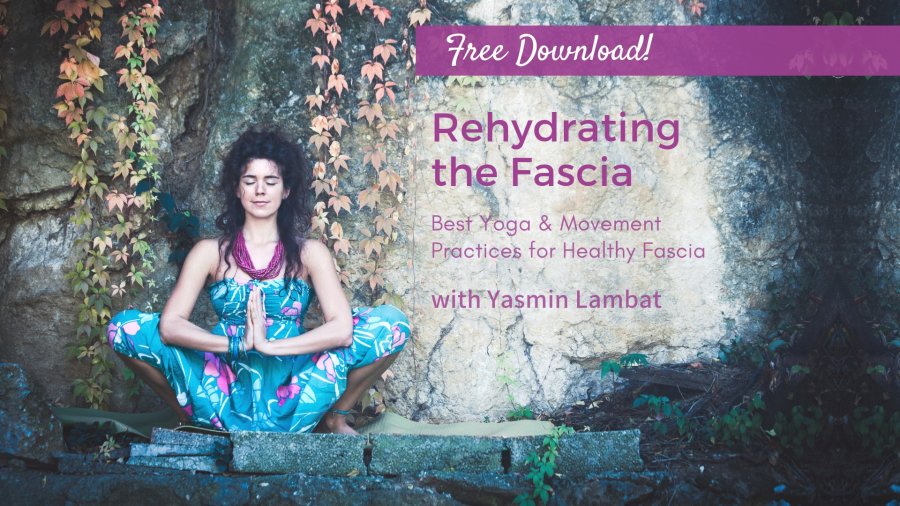Free Download! Rehydrating the Fascia – Best Yoga & Movement Practices for Healthy Fascia
Course Info
- Price:
- $0.00
Yasmin Lambat
 Yasmin Lambat is a fascia-informed somatic movement therapist and educator, registered with ISMETA www.ismeta.org. She is the founder of SomaSensing a fascia tuning therapy that taps into fascia as a sixth sense and its intuitive ability to heal through movement, in nature, and from moment to...
Yasmin Lambat is a fascia-informed somatic movement therapist and educator, registered with ISMETA www.ismeta.org. She is the founder of SomaSensing a fascia tuning therapy that taps into fascia as a sixth sense and its intuitive ability to heal through movement, in nature, and from moment to... 
Soft tissue aging lies at the root of numerous age-related issues like increasing tightness, chronic pain, loss of range of motion, back pain, and even joint issues and arthritis. The best time to prevent these conditions is not in our 50s and 60s, but long before when they emerge.
In this free download, yoga therapist Yasmin Lambat focuses on the important role the fascia – the connective tissue of the body – plays in this process.
We all know the importance of movement and strength-building for keeping the bones strong. But when it comes to aging of the soft tissue, there is a certain cascade of things that begin to happen. When the soft tissues dry out, we get stiffer, we lose mobility, we may be more prone to certain conditions like back pain and arthritis.
It doesn't have to be that way, however. We can work with the soft tissues, particularly the fascia to slow or avoid many common age-related issues.
A key to this, explains Yasmin, is to look at tissue hydration and the mechanics by which it is stimulated. Dehydration of the fascia leads to changes in the biochemistry of the tissues.
For example, if we sit for long periods of time, it puts a strain on the fascia, which in turn creates a biochemical reaction. The water absorbing molecules in the fascia become less efficient. These molecules are like a sponge and when they are mobile, they provide the gliding surface for our facial fabric. However, when there's any kind of strain or when there's not enough mobility, the fibers get stuck and sticky. This is what we experience as increasing tightness, stiffness, and loss of mobility.
Yasmin further describes the different ways we can work to counteract this process. Pandiculation movements like stretching, yawning and unwinding offer one approach. But it is also important, Yasmin notes, to look at how our emotional state and the amount of stress we’re under impacts the fascia.
Yasmin further describes her Body Sensing approach to myofascial release, which works with the body’s innate interoceptive sense to create greater calmness and trigger a parasympathetic response in the body.
Every movement in Body Sensing offers an expanding quality rather than a stretch. It happens from the inside; we get in touch with the inner blueprints of the body. Body Sensing involves exploring the sacred movements that we're born with to start to restore and rehydrate the facial tissue. This forms the basis for inner myofascial release or tissue hydration, Yasmin explains.
You may also enjoy Yasmin's course, BodySensing Yoga - Intuitive Myofascial Release for Fascial Health and Awareness.